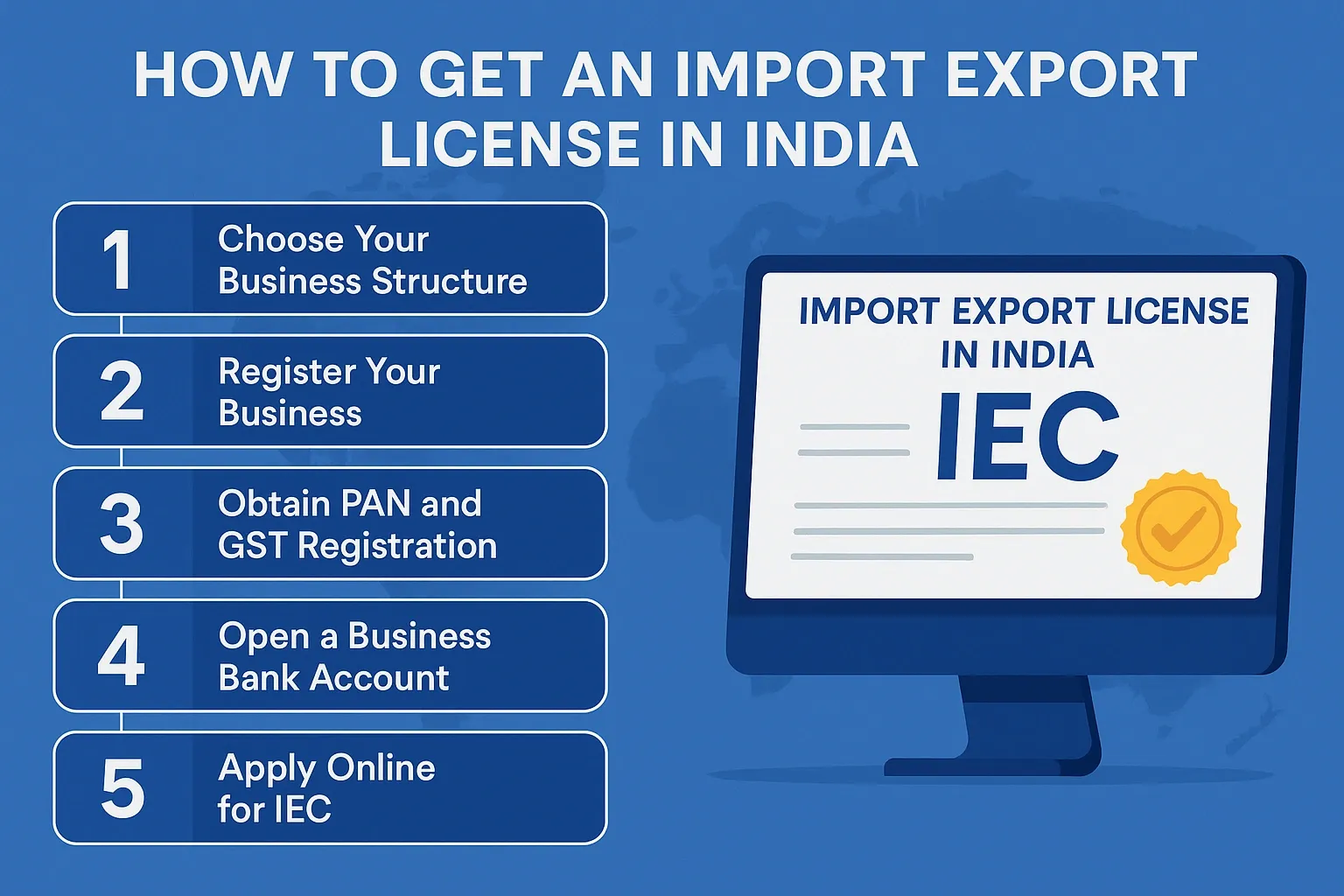How to Get an Import Export License in India: A Complete 2025 Guide

Simplify Your International Payments
Skip the complexity of traditional wire transfers with EximPe's smart payment solutions
Complete international transfers in hours, not days, with real-time tracking
Streamline BOE and Shipping Bill regularization online, and generate e-BRCs effortlessly.
India's global trade scenario is changing fast. This is a great time to get into the import-export business in India, as digitization, simplified compliance, and ambitious export targets are making a buzz on India's horizon. If you want to know how to obtain an import-export license in India or how to begin an export business in India, Eximpe's 2025 guide will give you insight.
Why an Import Export License is Crucial
In order for your export-import business to be viable in the Indian market, you have to register the business with the Indian government and get an Importer Exporter Code, which is issued by the Directorate General of Foreign Trade (DGFT). This 10-digit code is obligatory when it comes to clearing customs, clearing shipments, and receiving foreign currency. You cannot do import and export business in India without it.
How to Apply for an Import Export License in India
1. Choose Your Business Structure
If you are planning to apply for an import-export license, then you first need to register your business as a sole proprietorship, partnership, LLP or private limited company. This decision affects your tax obligations, compliance, and reputation as far as your international associates are concerned.
2. Register Your Business
Register your business with the Registrar of Companies (ROC) or the state authority that governs the registration of businesses. It is mandatory for legal recognition and establishing a business bank account.
3. Obtain PAN and GST Registration
In order to apply for an IEC, a valid PAN (Permanent Account Number) and GST registration are required. These make your business tax-compliant and fit for cross-border deals.
4. Open a Business Bank Account
Its business bank account dedicated to import-export payments is needed and is necessary in the process of application for IEC.
5. Apply Online for IEC
This is how one can apply for an import-export license in India:
- Log in to the DGFT portal and register your business.
- NRG's IEC application form can be filled out online.
- Upload the required documents: PAN, Aadhaar, business address proof, and bank details.
- Choose the prescribed fee and send your application.
The DGFT has cross-checked your details with the income tax department. If everything is all right, your IEC is generally provided in one to two working days; there is simply nothing easier to get to the business of import and export in India.
6. Stay Compliant
Renew your IEC annually between April and June, as per the latest DGFT notification. Also, ensure compliance with customs regulations, product-specific licenses, and documentation norms for each shipment.
Key Documents Required
- PAN card of the business/entity
- Proof of business address (rent agreement, utility bill, etc.)
- Bank certificate or cancelled cheque
- Certificate of incorporation/partnership deed (if applicable)
- Aadhaar card of the proprietor/partners/directors
Cost and Timeline
To set up an import–export business in India, which includes registration and licenses, would cost a range of ₹25,000 to ₹75,000. IEC itself is cheap and easily available within a short time if you have your documentation right.
Final Tips from Eximpe
- Check the ITC-HS code of your product to see if special licenses and limitations are imposed.
- Stay informed on the most recent trade regulations, as the RBI and DGFT often change them.
- Digital platforms such as ICEGATE and the DGFT portal can be used for seamless operations.
All you need to do, with the right preparation, is get your import-export licence, and the process will be as easy as a breeze. Eximpe is there to help you on your journey in India's fast-growing world of import and export business. Come on board today and benefit from India's expanding global trade opportunities!
FAQs
- Is an Importer Exporter Code (IEC) mandatory for all businesses in India?
Yes, an IEC issued by the DGFT is compulsory for any business or individual involved in importing or exporting goods and services from India, except for certain exempted categories.
- How long does it take to get an IEC after applying?
Once you submit your application with all required documents and fees on the DGFT portal, the IEC is typically issued within 1–5 working days.
- What documents are needed to apply for an import-export license?
You need a PAN card, business address proof, bank certificate or cancelled cheque, certificate of incorporation/partnership deed (if applicable), and a UID card of the proprietor/partners/directors.
- What is the cost of obtaining an IEC in 2025?
The official DGFT fee for IEC registration is ₹500, but your total setup costs (including business registration and compliance) may range from ₹25,000 to ₹75,0006.
- Do I need to renew my IEC every year?
Yes, as per the latest DGFT notification, IEC holders must update and renew their IEC details annually between April and June to keep them active and compliant.
Simplify Your International Payments
Skip the complexity of traditional wire transfers with EximPe's smart payment solutions
Lightning Fast
Complete international transfers in hours, not days, with real-time tracking
Bank-Grade Security
Multi-layer encryption and compliance with international banking standards
Global Reach
Send payments to 180+ countries with competitive exchange rates